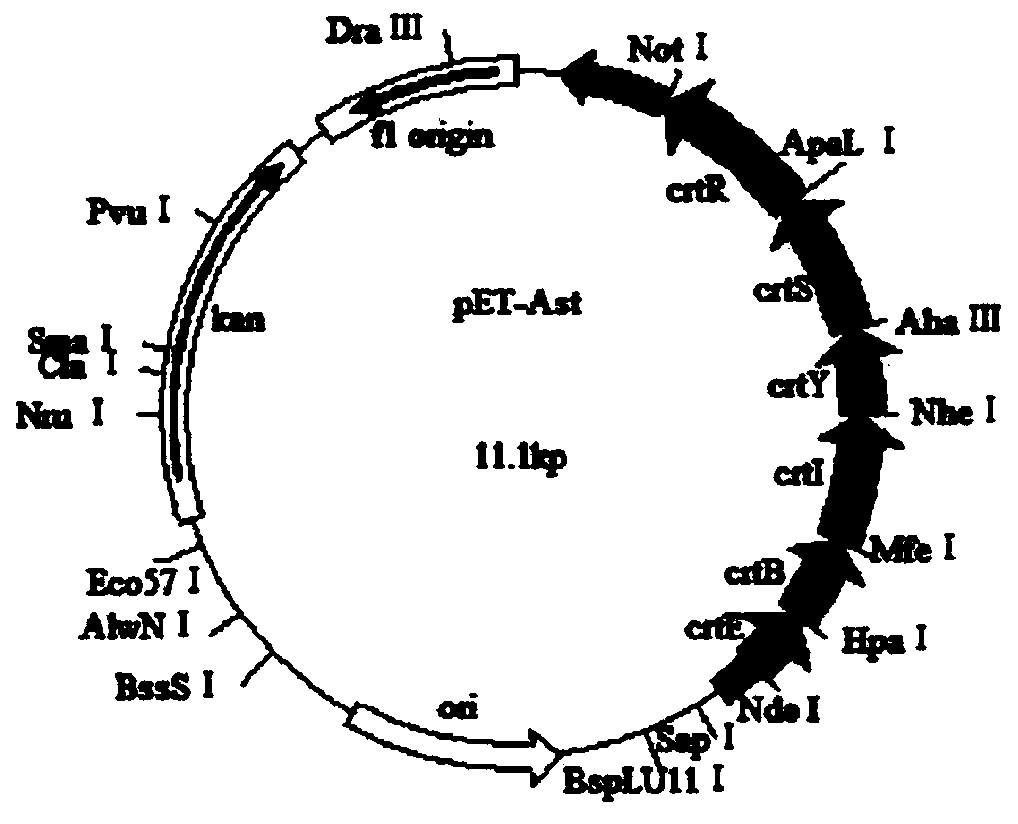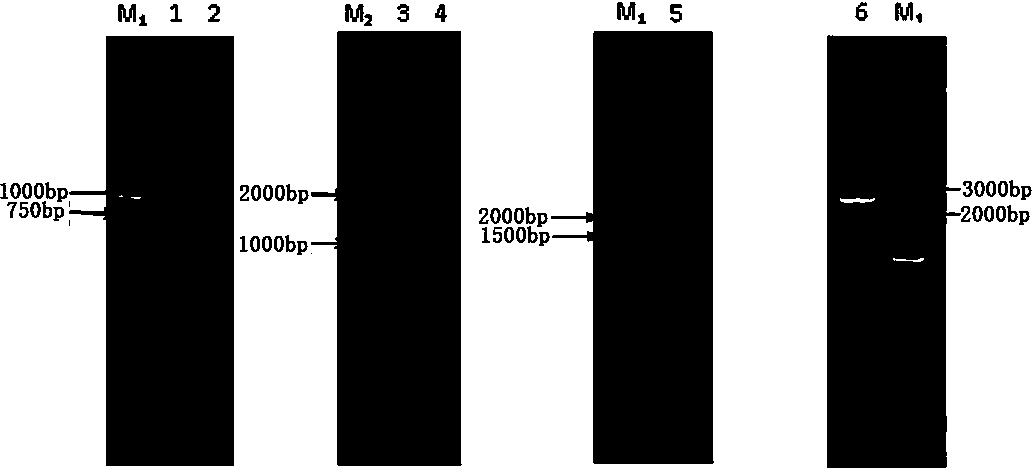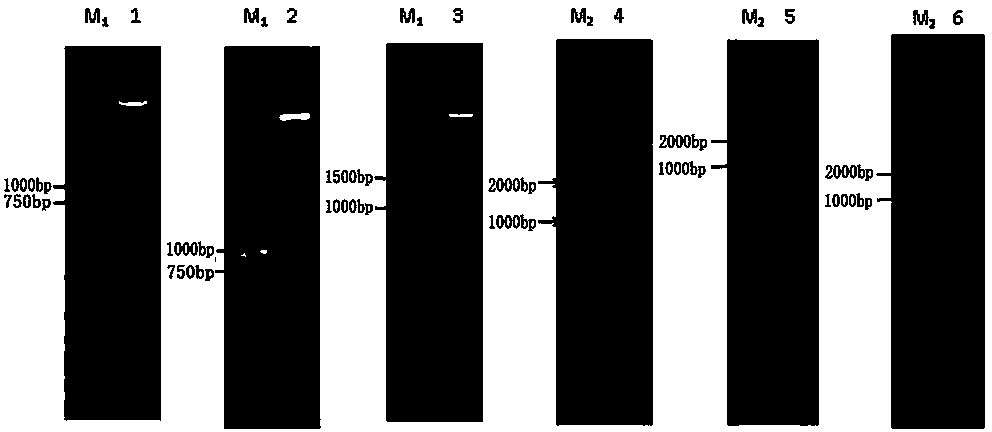Astaxanthin synthetic gene recombinant plasmid as well as preparation method and application of astaxanthin synthetic gene recombinant plasmid
A technology for synthesizing genes and astaxanthin, applied in biochemical equipment and methods, recombinant DNA technology, and using vectors to introduce foreign genetic material, etc., can solve the problems of cumbersome operation steps and low efficiency, and achieve simple methods, low cost, Effects built quickly
- Summary
- Abstract
- Description
- Claims
- Application Information
AI Technical Summary
Problems solved by technology
Method used
Image
Examples
Embodiment 1
[0057] Example 1: Construction of recombinant expression plasmid pET-Ast
[0058] (1) Gene amplification:
[0059] The total RNA of Phaffia rhodozyma CGMCC2.1557 (purchased from the China Agricultural Microorganism Culture Collection Management Center) was extracted using an ultra-pure RNA extraction kit (purchased from Kangwei Century Biotechnology Co., Ltd.), and the HiFi-MMLV cDNA first-strand synthesis kit was used to extract (purchased from Kangwei Century Biotechnology Co., Ltd.) was reverse-transcribed to obtain the first strand of cDNA, and RT-PCR was used to amplify the coding regions of crtS and crtR genes, ExTaq DNA polymerase (purchased from Takara), and corresponding primers (synthesized by Beijing Sanbo Polygala) ) See Table 1.
[0060] Genomic DNA of Pantoea agglomerans ACCC10495 (purchased from China Agricultural Microorganism Culture Collection and Management Center) was extracted by phenol-form extraction method, and used as a template for PCR amplification....
Embodiment 2
[0070] Example 2: Enzyme digestion verification of recombinant expression plasmid pET-Ast
[0071] The recombinant plasmid pET-Ast constructed in Example 1 was digested with NdeI and HpaI to verify the connection of crtE ( image 3 , lane 1); after HpaI and MfeI double digestion, the connection of crtB was verified ( image 3 , lane 2); after MfeI and NheI double digestion, the connection of crtI was verified ( image 3 , lane 3); after NheⅠ and AhaⅢ double digestion, the connection of crtY was verified ( image 3 , lane 4); the connection of crtS was verified by AhaⅢ and ApaLI double enzyme digestion ( image 3 , lane 5); after NotⅠ and ApaLI double digestion, the connection of crtR was verified ( image 3 , lane 6).
Embodiment 3
[0072] Embodiment 3: the fermentation detection of recombinant bacterial strain
[0073] The recombinant plasmid pET-Ast was introduced into Escherichia coli BL21 (Escherichia coli strain BL21 was purchased from Takara Company) for expression, and the main components of the fermentation product were determined by high performance liquid chromatography (HPLC) to detect whether the constructed recombinant expression plasmid accumulated astaxanthin .
[0074] The specific conditions for high performance liquid chromatography in this example are: chromatographic column: Hypersil ODS25um, 250×4.6mm; mobile phase: methanol: acetone: water; UV detection wavelength: 480nm; flow rate: 1.0mL / min; : 20 μL.
[0075] (1) Precisely weigh 10mg of astaxanthin, first dissolve it with a small amount of dichloromethane and then dilute it with acetonitrile to make a solution with a concentration of 0.1mg / mL, and use it as a standard solution for later use;
[0076] Introduce the recombinant pla...
PUM
 Login to View More
Login to View More Abstract
Description
Claims
Application Information
 Login to View More
Login to View More - R&D
- Intellectual Property
- Life Sciences
- Materials
- Tech Scout
- Unparalleled Data Quality
- Higher Quality Content
- 60% Fewer Hallucinations
Browse by: Latest US Patents, China's latest patents, Technical Efficacy Thesaurus, Application Domain, Technology Topic, Popular Technical Reports.
© 2025 PatSnap. All rights reserved.Legal|Privacy policy|Modern Slavery Act Transparency Statement|Sitemap|About US| Contact US: help@patsnap.com



